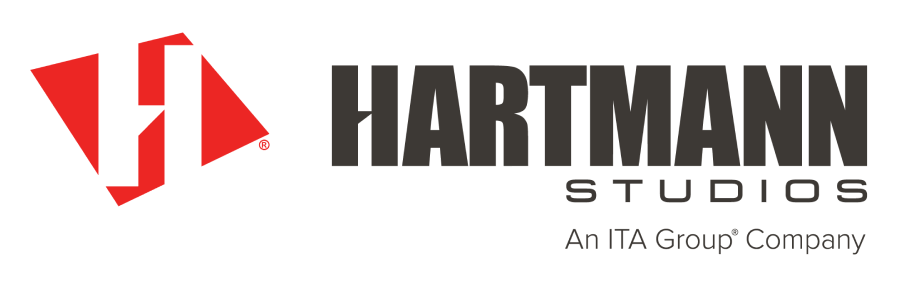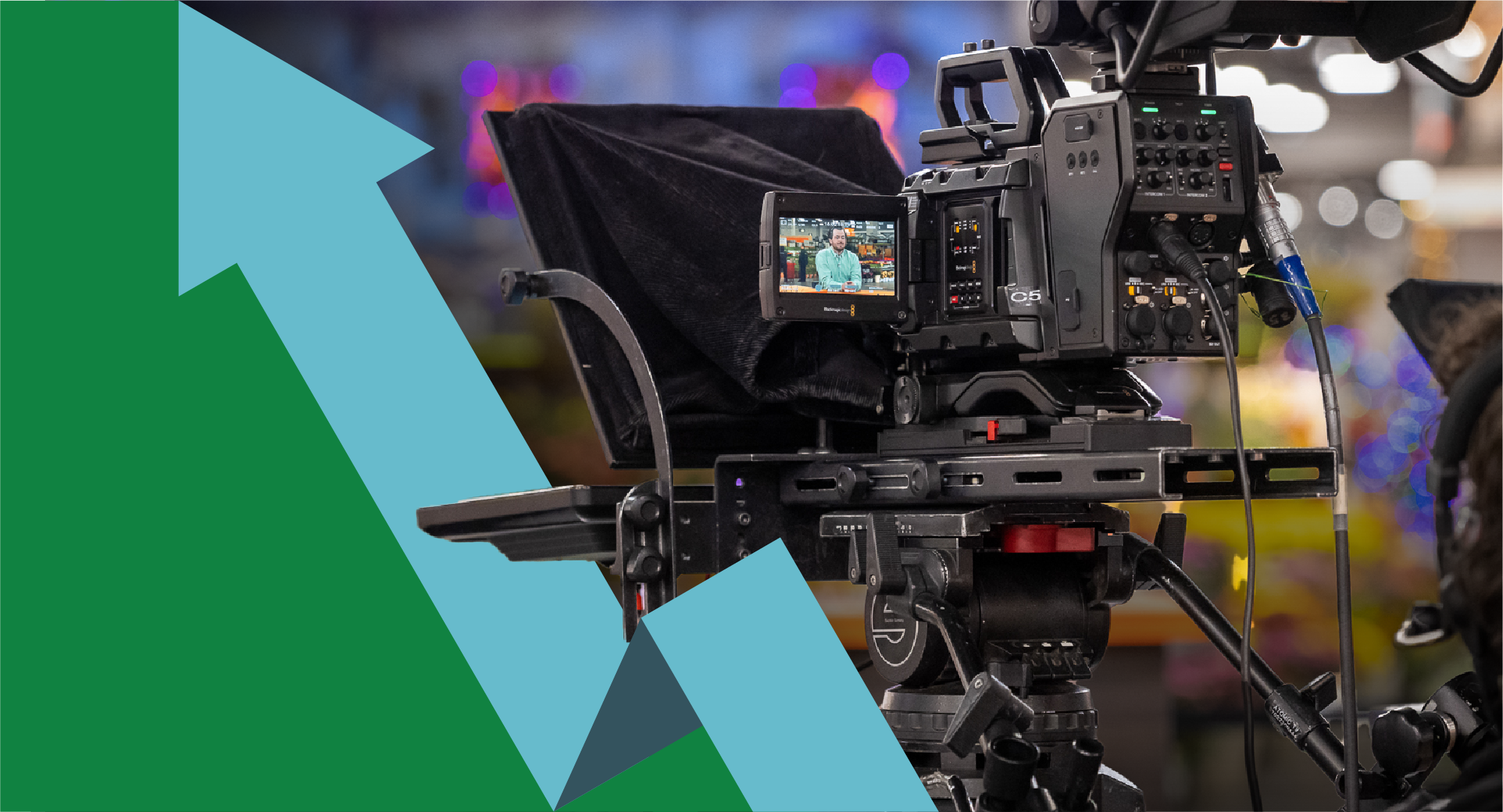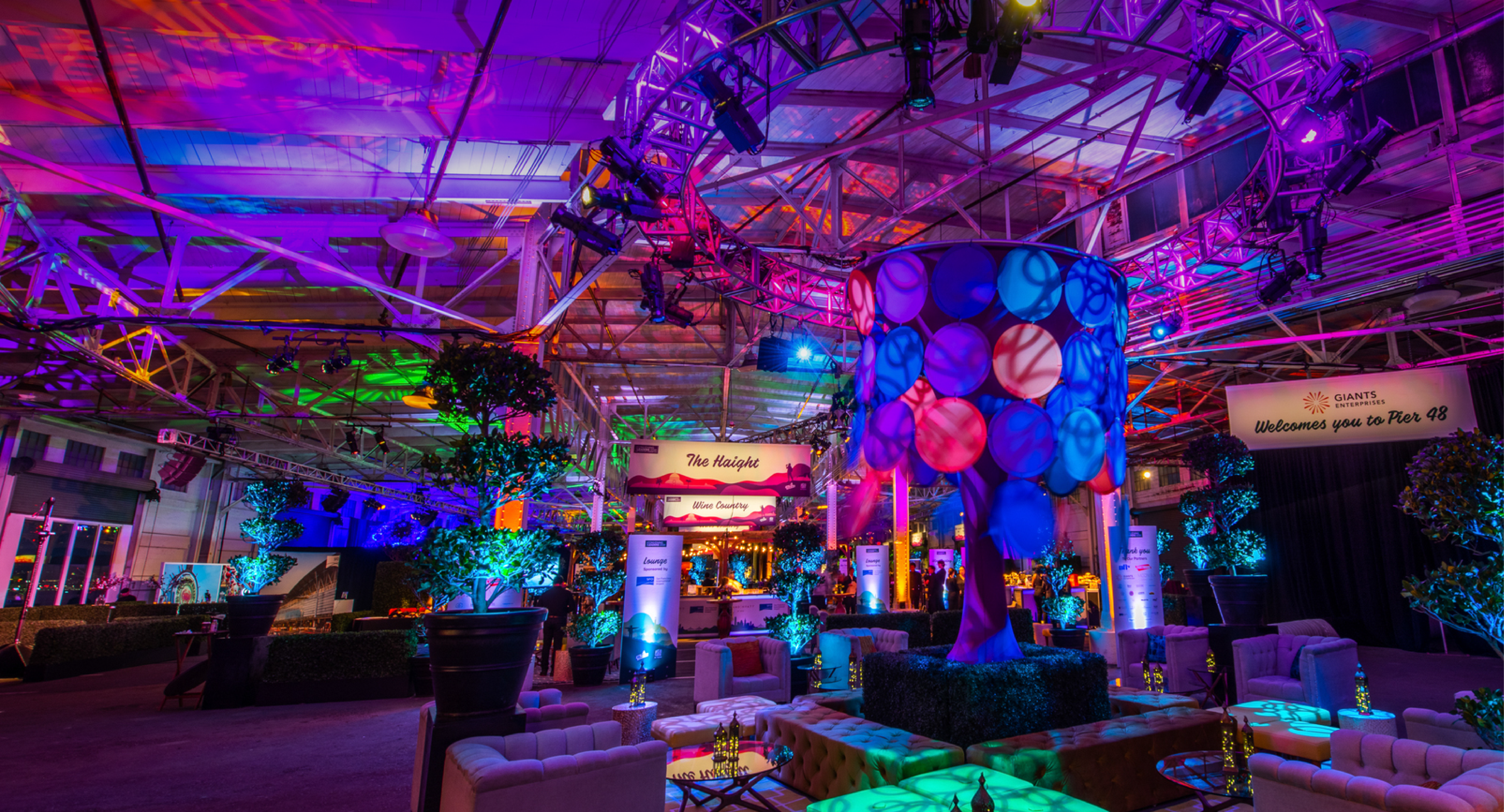A Conversation About The Future Of Virtual + Extended Productions
Wednesday March 8, 2023
11 Min Read
Nearly three years ago at the outset of the pandemic, Hartmann Studios partnered with Meptik to produce a completely virtual event using emerging, state-of-the-art extended reality production technologies, creating a massive volume of program content for a two-day live event accompanied by an online video library that extended over six months. The following conversation between Scott Lowry, executive vice president at Hartmann Studios, and Nick Rivero, co-founder of Meptik, explores how the events industry has grown in their usage of extended reality (XR) technology since then and where it’s headed.
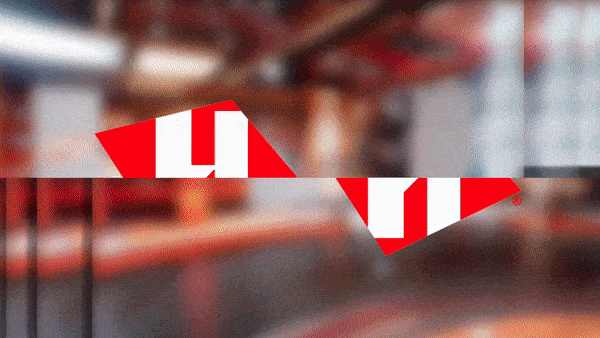
Scott:
We were recently together down at the Meptik studio. I really enjoyed the update on what’s now possible in the world of virtual and mixed-reality content production. I found myself reminiscing about the event we put together nearly three years ago in the midst of the pandemic. For this project, we stood up two temporary LED volumes, which are stages made from LED tiles used for virtual and XR production, and produced a tremendous amount of content over the course of about four months. And as we were on the XR demo stage at your Atlanta office, it struck me how far the capabilities have advanced in the past few years.
Nick:
It was a different era with so many new challenges. We were trying to figure out so many things— the creative use cases, messaging use cases and technology use cases. It was happening all at once in rapid succession and also in extremely strict conditions. We learned so many things during that time about the capabilities of this technology, distributed workflows, and how much content can be produced in a short amount of time.
Before the pandemic, working together remotely had a completely different meaning. You’d maybe work in a shared doc and get on a call to discuss but, in the end, you would still meet in person. The pandemic accelerated the digitalization not only of content production, but also in terms of how we work on productions together. We have now cemented remote processes and workflows so much that we’re able to have designers all over the world and never actually have to be in the same room to collaborate on a project.
Scott:
Exactly. The pre-production of digital content had been established before the pandemic, but the realities of the world we found ourselves in did force us to integrate remote production and personnel into the action on the set. We demoed the capability with clients and did our own testing of virtual production, but this was the first time that the team at Hartmann Studios was delivering content in this format at this scale. For us, it was the benchmark case study in building the plane mid-air.
The other thing that was a new challenge for us at Hartmann Studios was setting up a short-term XR studio to nearly the same degree that others would approach a permanent installation. All the technology that we had to integrate between the camera calibration and tracking, the virtual content design and integration and then executing the stagecraft with live props on top of that. It was a huge undertaking!
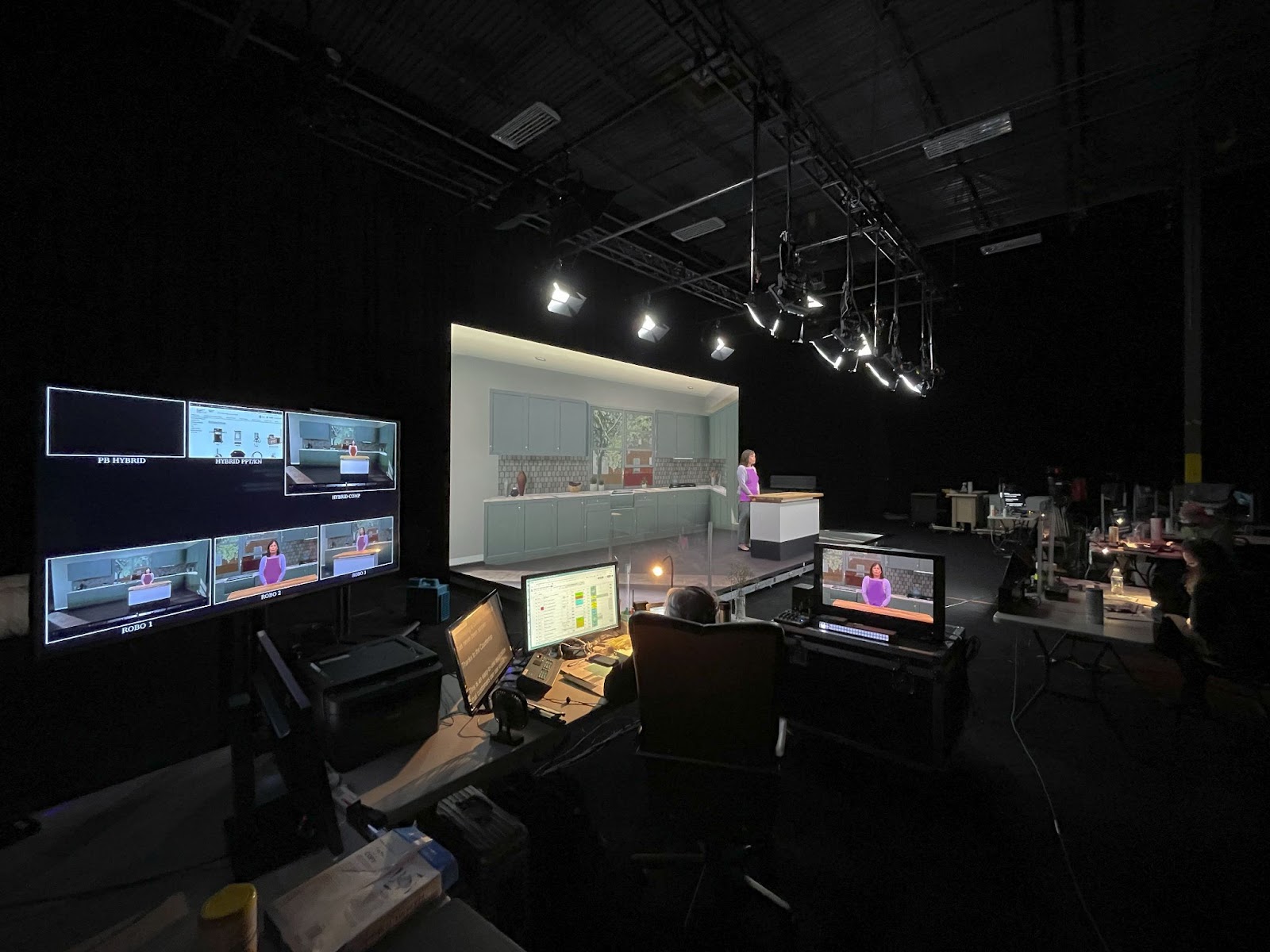
Nick:
Completely! I just remember the space so vividly and what it was like being in that room. What you all at Hartmann Studios did in terms of transforming the space and bringing that warehouse to life just showed what was possible.
Instead of reaching a limited live audience inside an overpriced ballroom in the middle of the city, we were able to reach a much wider audience in so many locations across the globe with an extraordinary amount of content, by transforming an empty warehouse in the middle of nowhere to a content production facility. Clients now recognize this potential and have a new perspective on all that is possible. I think that was a really huge revelation for everyone.
Scott:
I remember one of our presenters commenting that we had reached a demarcation point given the format’s ability to provide convenience, range and endless possibilities of visual storytelling.
But delivering on this was certainly not without its challenges. In terms of the integration of the hardware and testing the limits of the software, we were on the cutting edge. We really all got pushed to our limits with the daily challenges of getting to what we wanted, content revisions, and the pressure that comes with a production effort working with new hardware and software.
After seeing your demo today, what do you think was the biggest accomplishment of this project?
Nick:
That’s a great question — but first, as a side note, I hope you know that event set a new standard for the Meptik team. [Laughing] It has definitely raised the bar for a right of passage into our team.
Scott:
[Laughs] Oh, that’s great. It’s so true.
Nick:
You know though, I think the biggest accomplishment could be framed in how cutting edge the experience was, although that’s almost an understatement. Now that these XR facilities are getting built permanently for major broadcasters and film studios, they still don’t produce the volume of content we did in that four-month period.
For context, most film studios will produce one commercial in a two-week time period, shooting 3-5 scenes the whole time. If you think back to what we did, we shot something shy of about 200 commercial equivalents. Most film studios don’t do that in a year!
Now if you back up and look at it through that lens and the reality of where the technology was at that time, doing it with not only one, but two of these stages back-to-back, and also creating the number of virtual sets needed to fuel these stages to actually shoot the content within a time frame of only a couple months…it’s a pinnacle project. To this day, it’s still a huge accomplishment.
Scott:
Frankly, it’s still a benchmark event for Hartmann Studios as well. The level at which we had to band together while dealing with a pretty steep learning curve was unprecedented.
Looking at the present day, what is the rate your other clients are adopting this new technology?
Nick:
That’s a moving target for sure. It’s crazy to think about how far it’s come so quickly. Now, we have a lot of clients coming in, still not completely understanding XR technology or how it can work best for them, but knowing that more is possible. They’ve been hearing about it, maybe even seeing some of it, but haven’t dove in themselves. The knowledge of this tech has grown faster than the clients’ usage or proficiency of it, but it’s got them asking, “What else is possible?”
We used to live in a world where we only thought about physical experiential components. Now, we’re having discussions about the digital world (e.g. the metaverse). The way I see it is not an “either-or” discussion, it’s a combination. You don’t have to be in the room and it doesn’t only have to be catered to VR headsets. I think where we actually are is the idea that there’s a spectrum of “reality.”
What we can do now is take things that we’ve learned in the digital world and combine them with the physical, experiential world. We can create these really engaging hybrid events that have unique content for both the virtual and in-person audiences thanks to what we’ve learned in the last two and half years.
Scott:
Thinking logistically about using XR in the events space, how different would you say the tools and resources are?
Nick:
Oh, the tools have definitely gotten better! The systems and the actual design technology have gotten significantly better. Not only has the visual quality improved, but the pace at which we can do the work has, too. Three years ago, what would have taken two weeks to figure out can now be solved in a few hours. That’s simply just because the tool kits weren’t there. The improvements have become exponential.
In fact, the improvements on the tech side are now allowing us to focus on the element that is most important—the narrative and content.
When you’re working on the bleeding edge, systems don’t always do what you need them to do. That is simply because it hasn’t been done before. With nearly three years behind us, we’ve all been able to learn and build upon these past technological limitations and create a baseline and efficiencies we didn’t have previously. And that cycle just continues as we layer on new features to create even more possibilities for new scenarios.
Scott:
When I was at your studio last week and you were showing me examples of XR environments, I just thought it’s remarkable how far that’s come. What are some of the main areas of growth you’re seeing?
Nick:
First, the technology growth like what we were just talking about has become hardened and resilient. Those previously complex ideas have become normal.
The newest growth is more focused on this new definition of reality. Clients are looking to take these purely virtual experiences from a couple of years ago and apply them to in-person events as well. In essence, it’s creating one event for not only the 3,000 people that are physically in the room but also the 20,000 people tuning in virtually and making both audiences feel like they’re getting a bespoke experience.
For example, we can now take a keynote presentation and, using augmented reality (AR), put things that can’t physically go into the building next to them on stage. Using AR, we can show a car that doesn’t exist yet, for instance, to the virtual audience during the live, on-stage presentation. We can take things that would typically be delegated to a video shoot where those elements are added in post-production and bring them to life in real time.
Another example I have of this is a project we’ve done for Karate Combat 37. It’s taking a mix of physical and digital components and immersing the in-person audience into a dystopian setting while the real-time virtual environment extends beyond the on-site sets for a comprehensive remote viewing experience. It blurs the lines of reality.
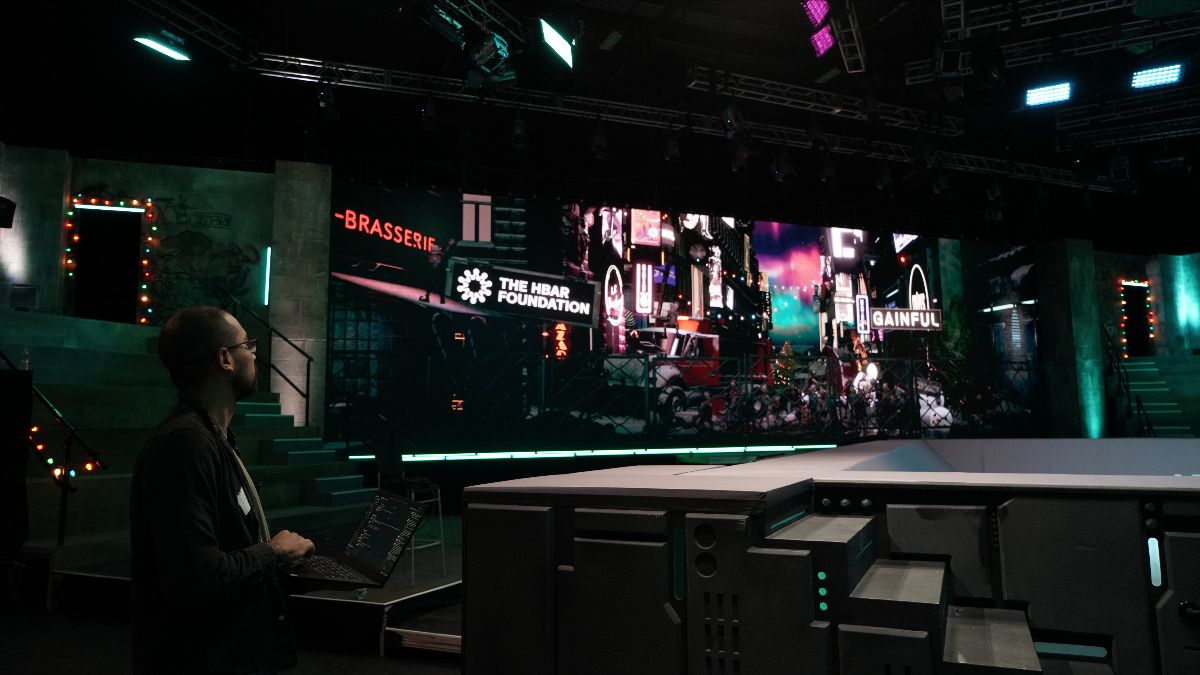
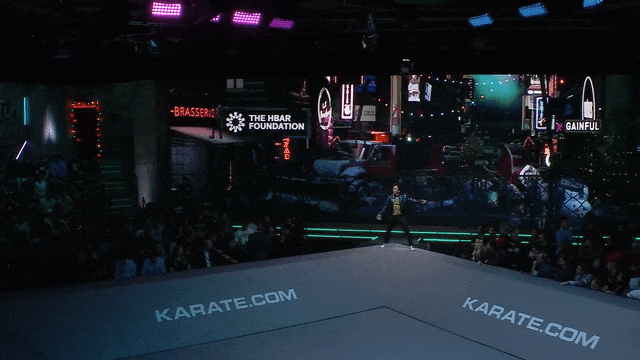
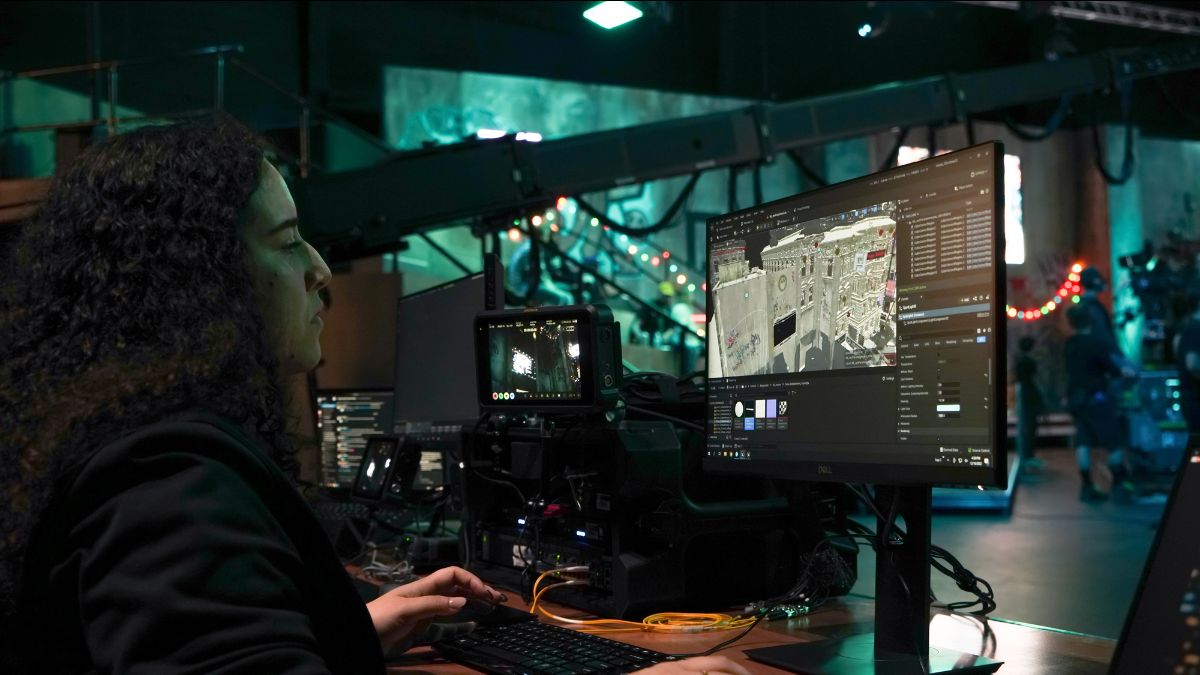
The last thing I’ll mention is that I truly think the future is about content. Everything generates content—people and corporations have things to say and messages to give. It then comes down to capturing and distributing that content to share. What these new technologies allow us to do is accomplish this at a higher quality and on a bigger scale, better reaching global audiences with more immersive experiences than ever before. These, and the constantly emerging technologies, allow us to bridge the gap of virtual and in-person, creating that spectrum of reality we previously mentioned. Hybrid experiences are going to become an integral part of our daily lives.
Scott:
Right, at the end of the day, content is king, and it’s only getting more difficult to create, craft and produce content that cuts through the ocean of messaging out there. Virtual and extended reality production offer the best way for our clients to create an impression, capture the imagination of their audience, and make an impact with their stories and brands.
If you’re interested in learning more about XR or how it could benefit your next event, we’d love for you to get in touch.
Read more stories
View AllAll Posts
Scale Your Story: How Event Video Production Amplifies Emotional Connection
What you need to know In creative event strategy, messaging must transcend the event environment. Video production opens endless possibilities for amplifying storytelling across platforms: Approach video as a must-have asset that anchors your event, with a return on investment that extends long afterward. From pre-show teasers to post-show takeaways, videos serve marketing, training and...
4 Min Read
All Posts
Perfectly Timed Technical Production with Karim Kassab
What you need to know Keeping his cool is part of Karim Kassab’s professional DNA. As a seasoned event producer with over 35 years of hands-on experience, he supervises teams to integrate ambitious technical elements across large-scale programs and events. Staging, lighting, audio, video and special effects—Karim introduces vivid elements into complex technical environments. All...
7 Min Read
All Posts
4 Ways Environmental Designers Support Creative Event Production
Event design draws us out of our everyday environments. Dynamic displays, scenic builds and dramatic stages capture the audience’s attention. Customized spaces come together thanks to the behind-the-scenes talents of environmental designers. These solution-oriented event production experts believe great event design shouldn’t just look incredible. Thoughtful design elements open minds and promote interaction. Here are...
4 Min Read
